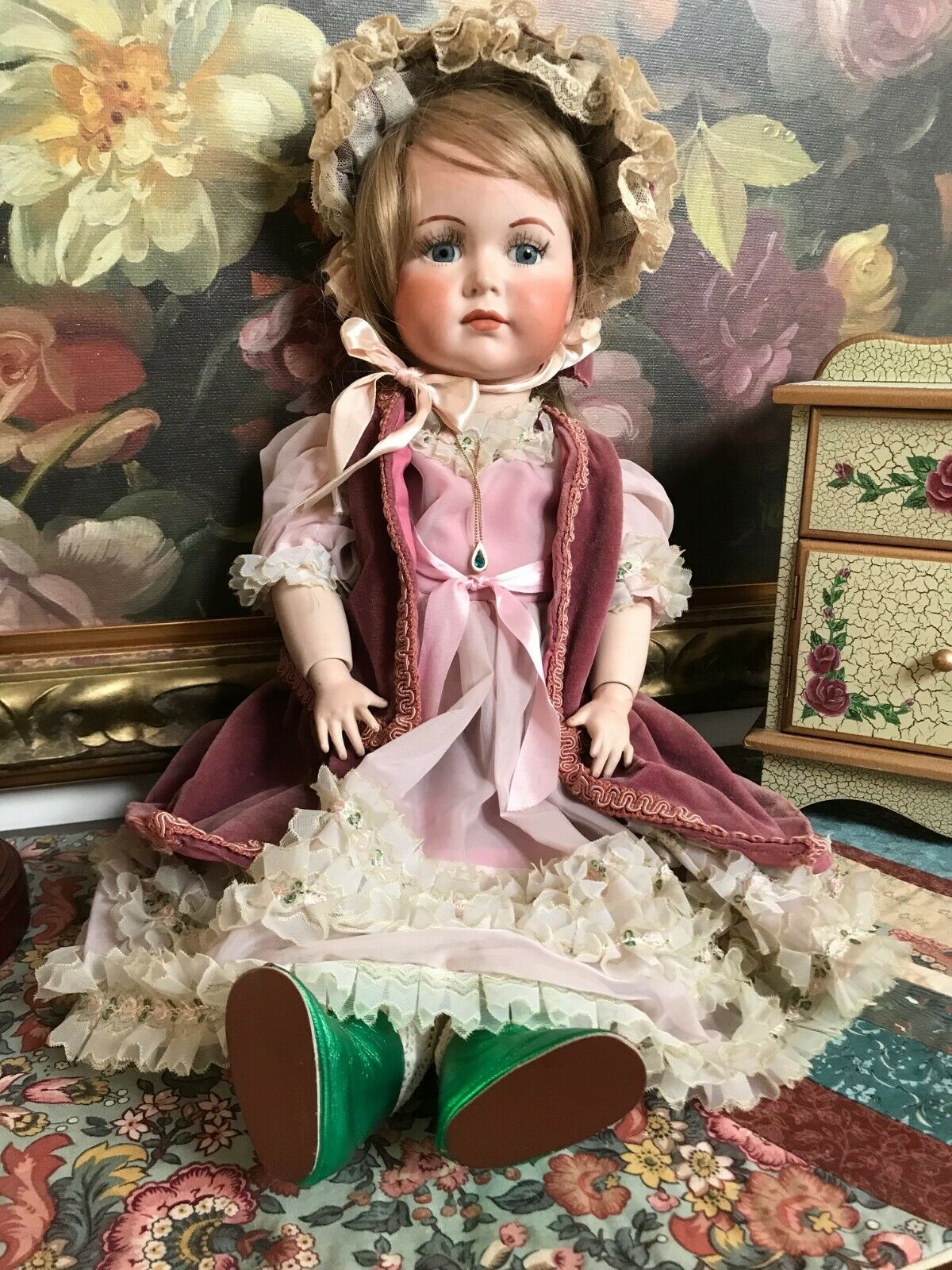
from the 1920s with real hair,
retailing at 112$ at an auction,
by Golden Estate Goods via Ebay
Bisque dolls available on the market in the XIXth century ranged in prices. The penny babies, cheaply made, small toys were directed towards the less fortunate families and their children, whereas kids from upper classes had access to the more expensive, more detailed dolls. Barbara Meissner (1997) makes an interesting comparison between the dolls: the cheaper ones were usually only around 10-15 cm tall, with only hip and shoulder joints, a wig, and sometimes a turning head, and they would usually cost about $ 0.39 for twelve dolls (about 14,75 $ today). The expensive ones were about 70 cm tall, had more movable joints (wrists, knees, hips and shoulders), dressed in hand-sewn gowns, with sleep eyes and a beautiful mohair wig (Meissner, 1997). The latter dolls retailed for about $40.00 for twelve dolls (a whopping 1512 $ today!).

The Victorian dolls would often be a reflection of those who bought them. Dressed in lace and velvet, they were a symbol of wealth and status, since the parents could afford to buy such expensive and detailed toys for their children (Hart, 2022). The wigs were made of real human hair, usually bought from girls from the working class (Hart, 2022).
Nowadays, porcelain bisque dolls have become a collector's item. Found at flea markets, antique stores or auctions, they can be worth a great deal of money.
